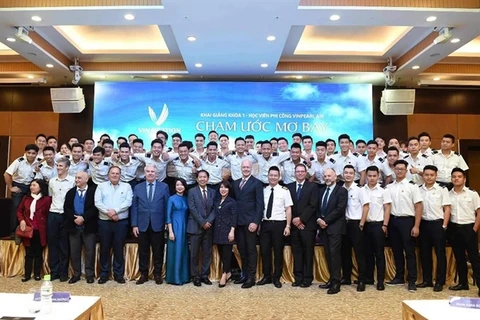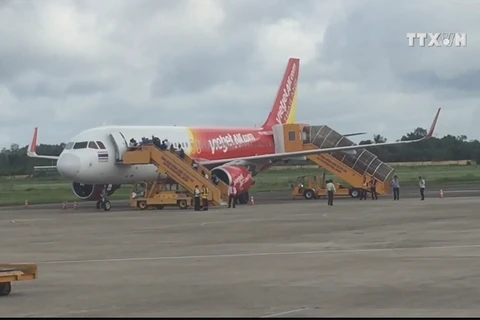Hanoi VNA – Vietnam has registered the strongest growth in aviation in Southeast Asia, according to Randy Tinseth, vice president of marketing for Boeing commercial planes.
The top US aircraft manufacturer has forecast that Southeast Asia will need 4,500 new planes in the next two decades, with single-aisle jets expected to dominate the big growth in the region.
The company said countries in the region will place orders for the aircraft that will amount to 710 billion USD at list prices.
"This growth helps to stimulate the demand for commercial aviation services, which are forecast to be worth 785 billion USD between 2019 and 2038," said Boeing, one of the world's largest plane makers, in an outlook note.
Randy attributed the regional growth to strong needs in Vietnam, Thailand, and Indonesia, which made the top 10 list of countries that added the most airline seat capacity since 2010.
He said Vietnam has registered the strongest growth out of the three, at nearly 15 percent each year, followed by Thailand and Indonesia, at a separate rate of about 10 percent.
The Boeing official said Southeast Asia has become one of the world's largest aviation markets as its middle-class population continues to expand with a more liberalised market and booming tourism at domestic, regional and international levels.
Meanwhile, the needs for wide-body aircraft in the region will also witness robust growth as such passenger jets will account for about 19 percent of the new deliveries, according to Boeing.
Across the world, Boeing projected that a total of 44,040 new commercial airplanes are needed over the next 20 years, which will generate about 6.8 trillion USD in airplane sales and 9.1 trillion USD from after-sale services.
Vice President of commercial marketing at the Boeing Company Darren Hulst said: “The growth of Vietnam’s domestic aviation market is extremely impressive, and most of the routes in this market are being exploited by single-aisle aircraft.”
He noted that 10 years ago, there were only 31 domestic direct routes in Vietnam, but now the figure has nearly doubled. In addition, the number of domestic flights has increased 3.5 times over the past decade.
“The growth of the global aviation industry plays a part in the growth of Vietnam’s international aviation market. Within only a year, nearly 50 international routes were launched to and from the country. It is estimated that by the end of this year, the figure will increase by 200.”
The international aviation market in Vietnam is growing at a rate of 15 percent annually, according to the official.
Director of the Civil Aviation Authority of Vietnam Dinh Viet Thang also affirmed that in the past growth, the aviation market was completely put under the control of the state management, creating a healthy and competitive market and bringing many benefits to passengers in terms of travel opportunities, fares and quality of services.
Vietnam’s aviation sector has officially entered the 24th year of ensuring absolute safety, which is an important point that very few aviation industries around the world have achieved, he said.
The industry currently features the participation of five airlines, namely Vietnam Airlines, Vietjet Air, Bamboo Airways, Jetstar Pacific, and Vietnam Air Services Company (Vasco), contributing to building a highly competitive aviation market.
It is forecast that in 2020, the Vietnamese aviation market will serve 86.8 million passengers, up 10.8 percent compared to 2019, while transporting approximately 1.4 million tonnes of cargo, surging by 11 percent from the previous year.
The Prime Minister has approved an air transport development plan until 2020 with orientations to 2030, setting an important task of building the civil aviation industry into an important economic sector of the country, contributing to pushing up the national socio-economic development, industrialisation and modernisation./.

























